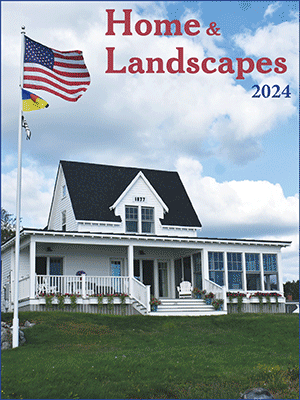The 'American Promise'
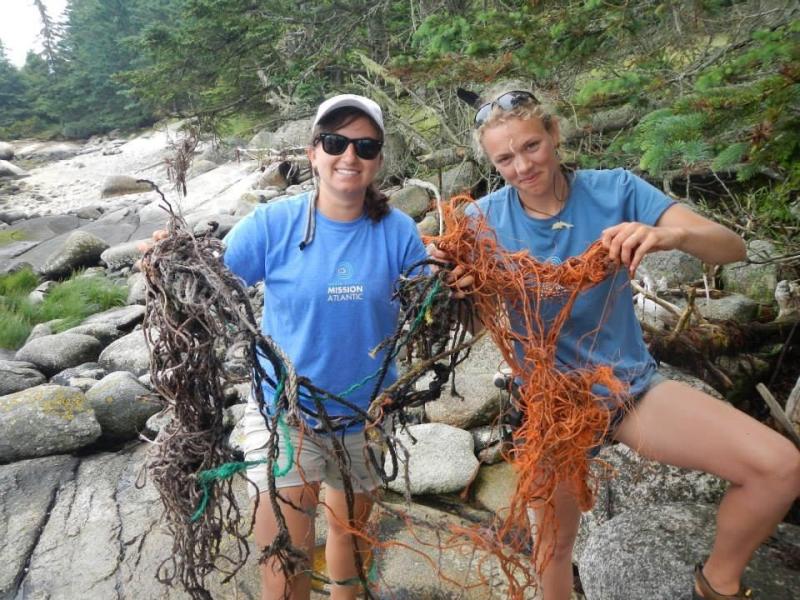 Michelle Levano and Marina Garland pick up trash on the shores of Hurricane Island before returning to Boothbay on June 24. Courtesy of the Rozalia Project
Michelle Levano and Marina Garland pick up trash on the shores of Hurricane Island before returning to Boothbay on June 24. Courtesy of the Rozalia Project
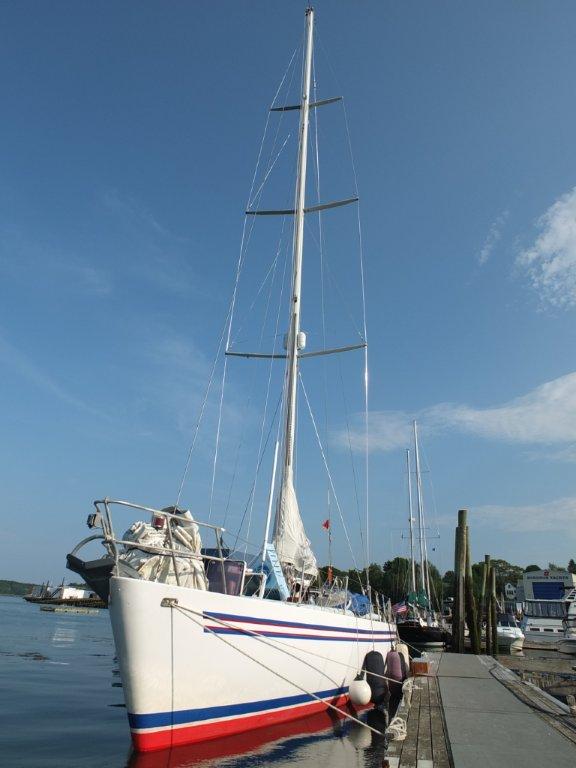 The “American Promose.” RYAN LEIGHTON/Boothbay Register
The “American Promose.” RYAN LEIGHTON/Boothbay Register
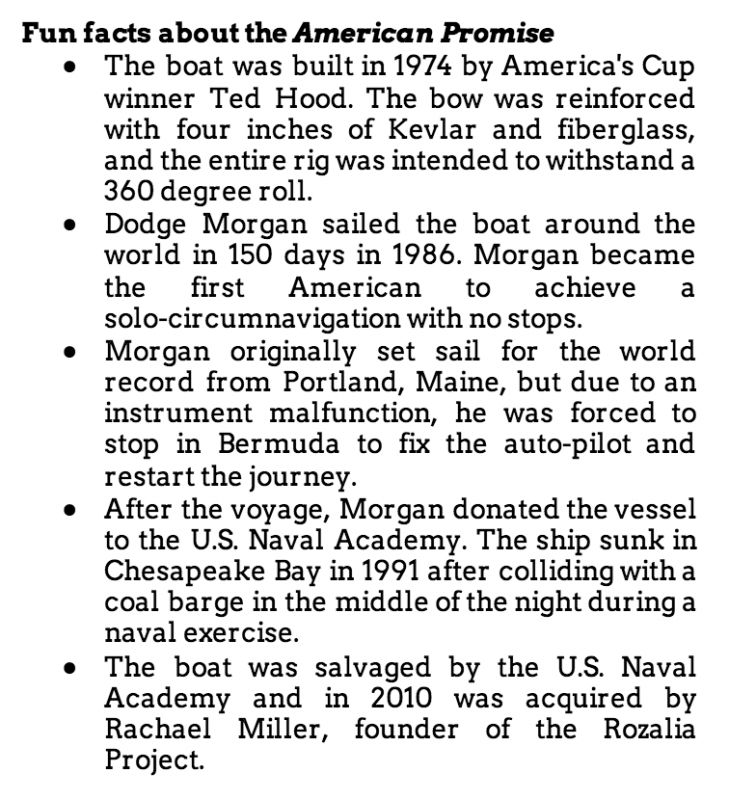

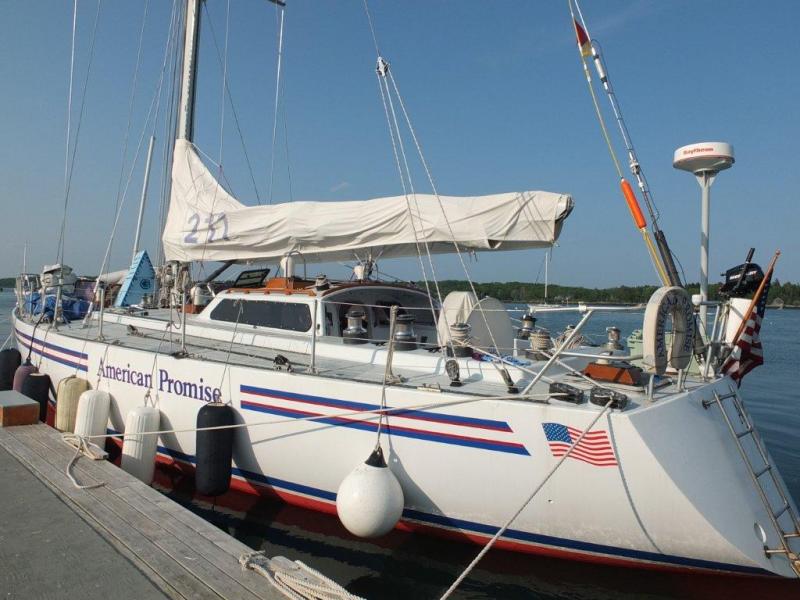 The “American Promise” docks at Ocean Point Marina in Boothbay. RYAN LEIGHTON/Boothbay Register
The “American Promise” docks at Ocean Point Marina in Boothbay. RYAN LEIGHTON/Boothbay Register
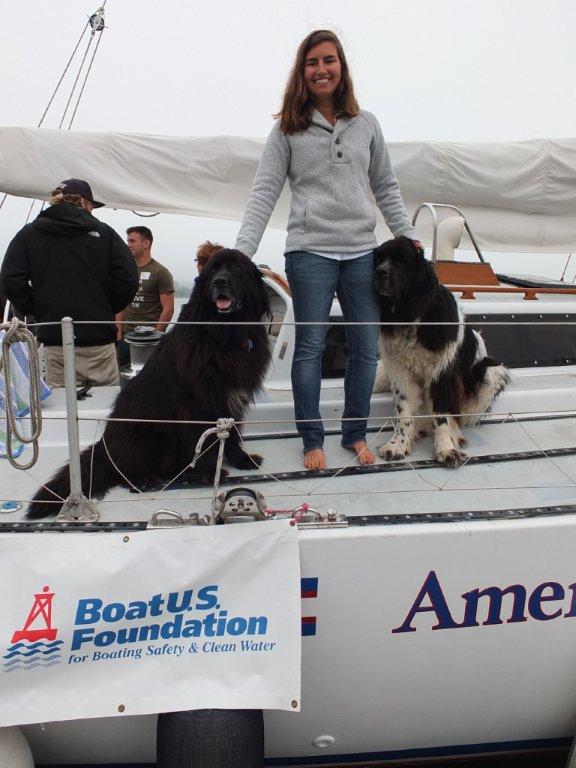 Michelle Levano, a summer intern, poses with Newfoundlands Smudge and Hickory, the furry mascots of the Rozalia Project. RYAN LEIGHTON/Boothbay Register
Michelle Levano, a summer intern, poses with Newfoundlands Smudge and Hickory, the furry mascots of the Rozalia Project. RYAN LEIGHTON/Boothbay Register
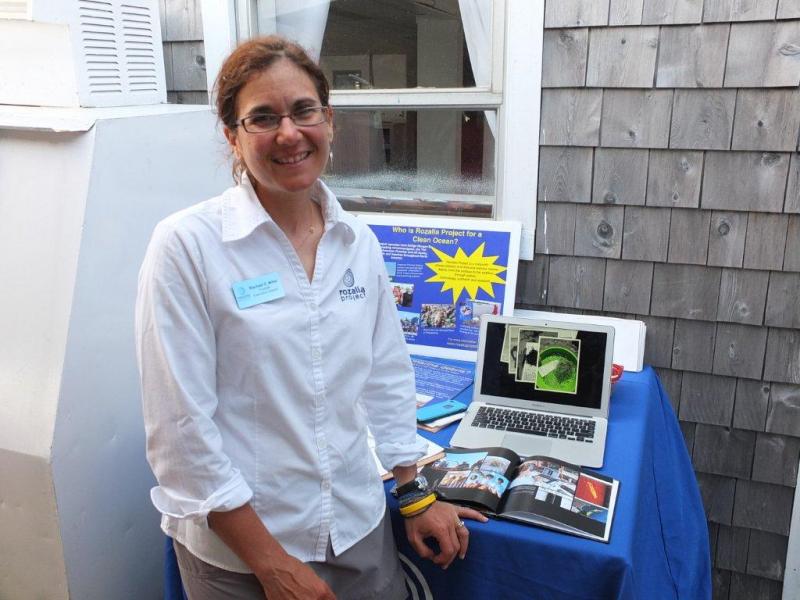 Rachael Z. Miller, founder of the Rozalia Project. RYAN LEIGHTON/Boothbay Register
Rachael Z. Miller, founder of the Rozalia Project. RYAN LEIGHTON/Boothbay Register
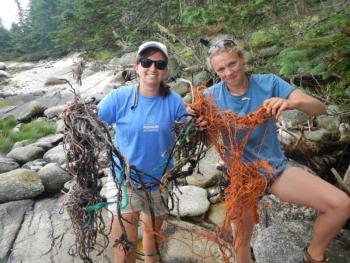 Michelle Levano and Marina Garland pick up trash on the shores of Hurricane Island before returning to Boothbay on June 24. Courtesy of the Rozalia Project
Michelle Levano and Marina Garland pick up trash on the shores of Hurricane Island before returning to Boothbay on June 24. Courtesy of the Rozalia Project
 The “American Promose.” RYAN LEIGHTON/Boothbay Register
The “American Promose.” RYAN LEIGHTON/Boothbay Register


 The “American Promise” docks at Ocean Point Marina in Boothbay. RYAN LEIGHTON/Boothbay Register
The “American Promise” docks at Ocean Point Marina in Boothbay. RYAN LEIGHTON/Boothbay Register
 Michelle Levano, a summer intern, poses with Newfoundlands Smudge and Hickory, the furry mascots of the Rozalia Project. RYAN LEIGHTON/Boothbay Register
Michelle Levano, a summer intern, poses with Newfoundlands Smudge and Hickory, the furry mascots of the Rozalia Project. RYAN LEIGHTON/Boothbay Register
 Rachael Z. Miller, founder of the Rozalia Project. RYAN LEIGHTON/Boothbay Register
Rachael Z. Miller, founder of the Rozalia Project. RYAN LEIGHTON/Boothbay Register
Rachael Miller's life changed forever when she took a vacation to Matinicus Island. A nor’easter had washed piles of trash up along shoreline. Repulsed, Miller said she couldn't take it anymore, so her husband suggested she do something about it.
A million pieces of trash later, Miller and her team of scientists and interns scour the coastlines and waterways for marine debris.
In three years, the Rozalia Project has become a nationwide organization dedicated to protecting the environment through action, technology, outreach and research.
The Rozalia Project recently visited Ocean Point Marina in Boothbay to welcome the public aboard the American Promise, a rugged 60-foot sailboat armed with a remote operated vehicle, (ROV), surfboards and two furry Newfoundlands.
In four days, curious onlookers were treated to a formal presentation, trash hunting demonstrations and even a sea chantey entitled “We're Sick of Seeing Garbage in the Ocean,” sung by the lively crew.
Miller said she acquired the American Promise from the United States Naval Academy, but it was no ordinary sailboat.
The American Promise had belonged to Dodge Morgan. In 1986, Morgan became the first American to sail solo around the world in 150 days without stopping. He broke the previous world record by 142 days.
Miller reconfigured the interiorand had the vesseloutfitted with an Austrian diesel engine, a clean, energy-efficient system capable of pushing the 75,000-pound vessel at 9 knots through the water with just a gentle purr, said Mark Naud, the project coordinator and a friend of Miller.
“It's just a great platform to do the work they're doing, and it supports the staff and the floating laboratory that (Miller) wants,” Naud said.
On the water the Rozalia Project crew uses nets and hooks to pick up trash on the ocean surface, while relying on sonar imaging, and their underwater robot named “Hector the Collector” to roam the sea floor, send images back to the crew, and collect garbage with its mechanical claw.
Miller said the most common trash collected includes plastic bottles and containers; however, other bizarre items hauled over the railing have included an old ship’s bell, an antique bottle of moonshine, a witch hat, fake buttocks and traffic cones.
Every single piece of trash collected is documented and entered into the Rozalia Project’s databank.
According to her research, Miller said 80 percent of marine debris comes off the land; and since land people tend to congregate in cities, the Rozalia Project operates mostly in urban and coastal waterways up to 100 miles offshore.
“When we’re near shore we tend to get items that are more intact,” Miller said. “It’s a lot easier to pick up a bucket, while it’s still a bucket.”
Miller said she calculated a five-gallon plastic bucket turns into 10,000 pieces of plastic smaller than 5 mm in diameter, called microplastics that flow into slowly churning garbage patches called ocean gyres.
Rozalia Project’s first mate and scientist Marina Garland said there are five major gyres spread throughout world’s oceans. Garland said last year she visited the North Pacific Gyre, a patch of marine debris which people falsely claim to be a floating island of trash, twice the size of Texas.
“It’s not a floating island, it's actually a lot harder to research, and hopefully not impossible, but at present, it’s impossible to clean up because it’s really spread out,” Garland said. “You can’t take a picture, and you can’t fly over it and see it. It’s more like plastic chowder with lots of chunks and really teeny bits.”
Another gyre exists in the North Atlantic ocean, prompting the Rozalia Project to collect data to better understand how and where trash accumulates off the coastline.
Miller said her hypothesis for “Mission Atlantic” is pinpointing high concentration areas off the Gulf of Maine where cooler and warmer waters converge with faster and slower moving currents. “That’s where trash accumulates,” Miller said, as she displayed a chart modeling their initial findings.
The Boothbay Sea & Science Center invited the Rozalia Project to the region as part of the center's inaugural program.
Center Director Pauline Dion said Miller and crew plan to return in the fall to work with local teachers to raise environmental awareness and further education in the ocean sciences.
For more information on the Rozalia Project, visit www.rozaliaproject.org.
For Boothbay Sea & Science Center schedules and course registration, visit www.boothbayseaandsciencecenter.org.
Event Date
Address
United States

































